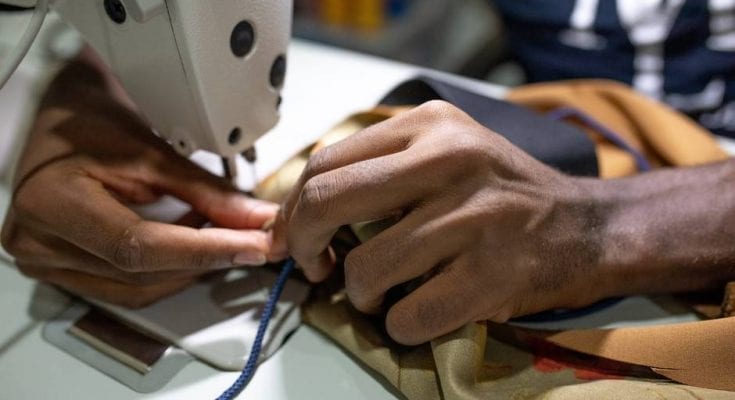In the world we live in today, we are consuming more than we ever have before. Whether it’s food, gadgets, new technology, clothing, or beauty products, consumerism is at an all-time high.
If there is one industry where this is apparent, it’s the clothing, textiles, and footwear industry that is now worth approximately $3 trillion, globally.
Much of the clothing industry as we know it today is driven by fast fashion. To learn more about this mega-industry, this blog highlights 8 fascinating facts you may not know.
1. Fast Fashion Is at the Core of the Clothing Industry
The global textile industry is massive and encompasses the realms of clothing, footwear, fabrics, and a myriad of other manufactured items.
But at the core of this industry is fast fashion, driving the consumption of clothes like never before. Fast fashion includes cheap, badly constructed clothes, made to imitate certain styles as seen on high-end catwalks or celebrities.
The over-arching goal of fast fashion is to pump-out clothing according to trends that come and go on a very fast turn-around.
But fast fashion comes at a cost. It’s called a toxic industry due to poor labor conditions and the environmental impact of producing clothes at such a fast rate. Not-to-mention, the amount of fast fashion waste.
The same goes for the truth about leather products and many other popular textiles. Most of the time, these products are blindly consumed by society without questioning how they’re sourced or produced.
2. The Clothing Industry Accounts For Huge Employment Numbers
Did you know that the global clothing industry accounts for 1-in-6 people who are currently employed?
The United States employs over 1.9 million people in the fashion industry alone, with the total labor force being approximately 161 million people. Approximately 79% of these people work for fast fashion retailers.
This leaves very few numbers for those actually manufacturing the clothing which we consume at an unprecedented rate. In fact, this number sits at just 8%, with 143,000 people employed in the manufacture of clothing in the U.S.
3. Nike Dominates the Fashion World
It’s no secret that some of the largest fashion companies in the world are based in the United States. This includes fashion giant, Nike, which is an American-based business.
With yearly revenues that exceed 30.6 billion, the Nike brand is most consumed on home soil. This amounts to 46% of Nike’s total revenue. The brand is an unrivaled powerhouse, accounting for 94% of Nike’s income.
Nike’s best-selling division is footwear, including 6% of its total revenue coming from subsidiary brand, Converse.
4. The United States Is the Biggest Global Importer of Clothing
With the above brand in mind, it’s worth noting that Nike’s apparel is not made in the United States. Instead, it is imported, like so many other fashion and textile-related products.
Some of the most prevalent countries the United States imports from are China, Canada, Mexico, Japan, and Germany.
This puts the U.S. at the head of the pack as the largest importer of goods from across the globe. A large portion of this includes textiles and low-cost apparel.
5. Fast Fashion Is a Huge Contributor to Global Warming
The manufacture of polyester and other synthetics used in the clothing industry is detrimental to the environment.
According to Forbes, it takes almost 70 million barrels of oil to produce polyester fiber to meet the needs of this industry every year. It also takes two centuries for this material to decompose.
This means that much of the clothing we buy sits in landfills, rather than on our bodies, for far longer. This is just one of many alarming facts regarding the impacts of fast fashion on the environment.
6. Fast Fashion Is Designed Badly on Purpose
The overall premise of fast fashion is the quick turn-around of garments, inspiring consumers to buy more, at a quicker rate. But part of this includes the poorly-made structure and design of clothing.
Fast fashion items are made to stretch, fall apart, tear, or wear out, and become uncomfortable, on purpose. The aim is to force consumers to purchase new clothes.
7. Our Consumption of Clothing Has Increased by 400%
Over the past two decades, our consumption of clothing as a global nation has increased by 400%. Essentially, we are buying more clothes than we really need, and paying the least amount for them in history.
This is largely driven by the fact that over 80,000 clothing garments are produced on an annual basis. These garments are being sent to retailers and invariably end up in our closets.
Another driving factor behind this is the world’s ever-growing obsession with consumerism itself. Society, as a whole, is driven by the need to shop and the idea that if you have more, you are worth more.
8. A Huge Amount of Clothes Go to Waste Each Year
With so much excessive manufacturing and buying, it’s no wonder that a huge amount of clothing ends up in landfills, year-after-year.
According to statistics, the U.S. wastes over 15 million tons of clothing every year. Only 15% of this amount is recycled or donated to thrift stores across the county. Unfortunately, the rest is dumped into landfills.
To add to this, the average consumer in the U.S. buys over double the amount of clothing that was purchased just 15-years ago.
Get Your Fill of Interesting Facts Here
We hope this blog on the clothing industry has been an eye-opener if you’re just like every other average consumer. Perhaps now is a good time to reassess where you purchase your clothes from. As well as how often you’ll wear a garment when you buy it.
If you’re looking for more interesting facts and figures on a range of topics, be sure to explore this site for more. We offer all there is to know about technology, people, nature, planets, and fascinating product reviews!



